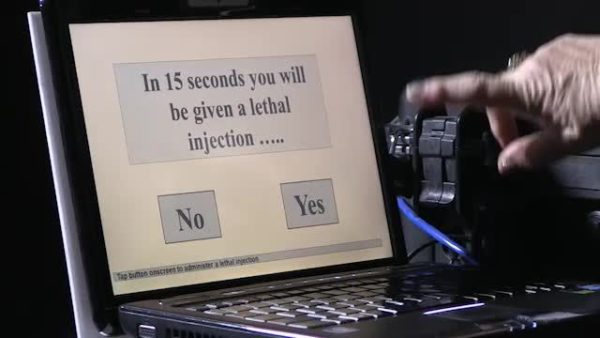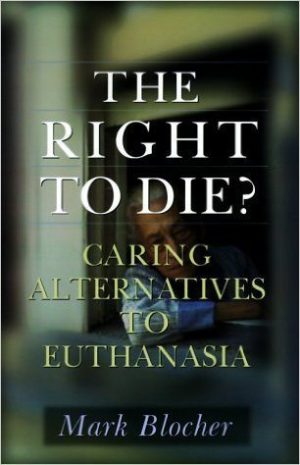Euthanasia [ ˌyü-thə-ˈnā-zh(ē-)ə\ ]
There is much debate and confusion about euthanasia. Examples of actions which are not euthanasia are often used to argue for law change which is euthanasia. This would be bad law. This short |Note aims to clarify some of the terms and issues in the hope that we can prevent this from happening.
What is euthanasia?
An act which of itself and by intention causes the death of another person in order to eliminate their suffering.
What is assisted suicide?
This happens when a person commits suicide with assistance from others, often by self-administering a lethal substance that has been obtained with the cooperation of a third party.
Withholding or withdrawing treatment is not euthanasia
When a treatment is judged to be medically futile, or when it is judged that the benefits of a particular treatment are outweighed by the burdens for a particular person, it is a question of accepting the inevitability of death and allowing the person to return to their dying.
The New Zealand Code of Health and Disability Services Consumers’ Rights allows for any person to refuse services and to withdraw consent to services.
People have a right to be free of pain
When a health professional administers medication with the sole intention of relieving a patient’s physical pain, that action is morally acceptable even if it foreseeably shortens the patient’s life. This is not an act of (slow) euthanasia as some claim.
Ethical and Theological Considerations
Supporters of euthanasia believe that decisions about end-of-life are essentially a matter of personal choice. Legalising such acts, it is argued, would simply provide those who wanted it with the choice about when and how to die and would not affect those who chose otherwise. This line of argument appeals to many but it fails to take into account the unintended consequences of a law change.
Acts of euthanasia and assisted suicide always involve others and affect others. They are never purely private matters. In addition, they have societal consequences; legalising euthanasia and assisted suicide will erode the general prohibition against killing in our society in a way that will over time lessen the respect for human life.
“Expanding one freedom often limits another. It does more than simply provide options … Expanding personal freedom to include assisted suicide undermines another right – to remain alive without having to justify one’s existence.”
– Mark Blocher, Author of ‘The Right to Die?’
In addition, the so-called ‘right to die’ could very quickly become a ‘duty to die’. People who feel neglected, undervalued and invisible will understandably see themselves as a burden and will want to do the ‘right thing’, especially with growing pressures on families involved in care as well as growing pressures on health care and aged care funding. Looked at like this, it is apparent that legalising euthanasia or assisted suicide will ultimately undermine real choices at the end of life.
“If euthanasia is legalised, premature death becomes a significant risk in a society which is already ambivalent about people who are perceived as having little or nothing to contribute while ‘swallowing up’ large amounts of health resources.”
– John Kleinsman
Overseas practices show that, once legalised, assisted suicide and euthanasia are inevitably made available to those who are suffering mental anguish, including persons with mental illness, even when they have not asked for it.
“Legalising euthanasia will create new pathways of abuse for the elderly and disabled.”
– John Kleinsman
People who oppose euthanasia and assisted suicide and those who support it both want to prevent intolerable suffering. Research shows that persistent requests for physician assisted suicide or euthanasia mostly arise from deep fears and concerns about not wanting to be a burden or from a sense of isolation rather than from a fear of pain.
Pope Francis has recently compared abandoning the elderly and disabled as being like a form of euthanasia. The call to discipleship demands of Christians an active commitment to holistic care for those who are suffering, elderly or disabled. Palliative care focuses on the needs of the whole person; physical, emotional, cultural, social and spiritual needs. True ‘death with dignity’ occurs when these needs are met and the person is loved and cared for and feels included.
“Once you open the door to assisted suicide and euthanasia it always becomes wider and wider and wider, and before you know it what starts as an option for a few becomes what’s expected for the many.”
– Alex Schadenberg, director of Euthanasia Prevention Coalition
Resources
Book:
Death Talk: The Case against Euthanasia and Assisted Suicide by Margaret Somerville
Internet:
Euthanasia Debate – euthanasiadebate.org.nz
Free flyer – 8 Dangers of Euthanasia – euthanasiadebate.org.nz/resources/8-dangers-of-euthanasia
Why Right to Life opposes euthanasia – www.stuff.co.nz/national/health/euthanasia-debate/81335420/why-right-to-life-opposes-euthanasia
John Kleinsman
Director, The Nathaniel Centre
In addition to bioethics, John has experience in the areas of disability support as well as the drug and alcohol rehabilitation sectors. He was previously a member of the Central Region Health Research Ethics committee and serves on a number of other ethics committees and advisory committees.












0 Comments